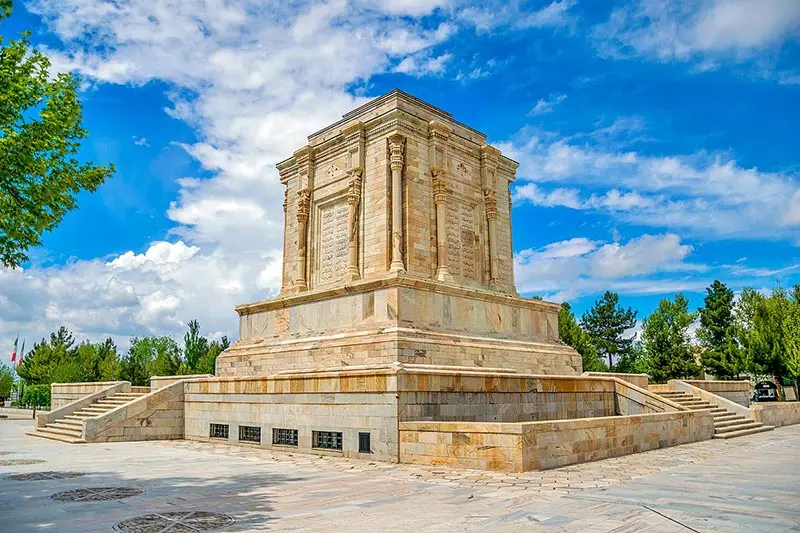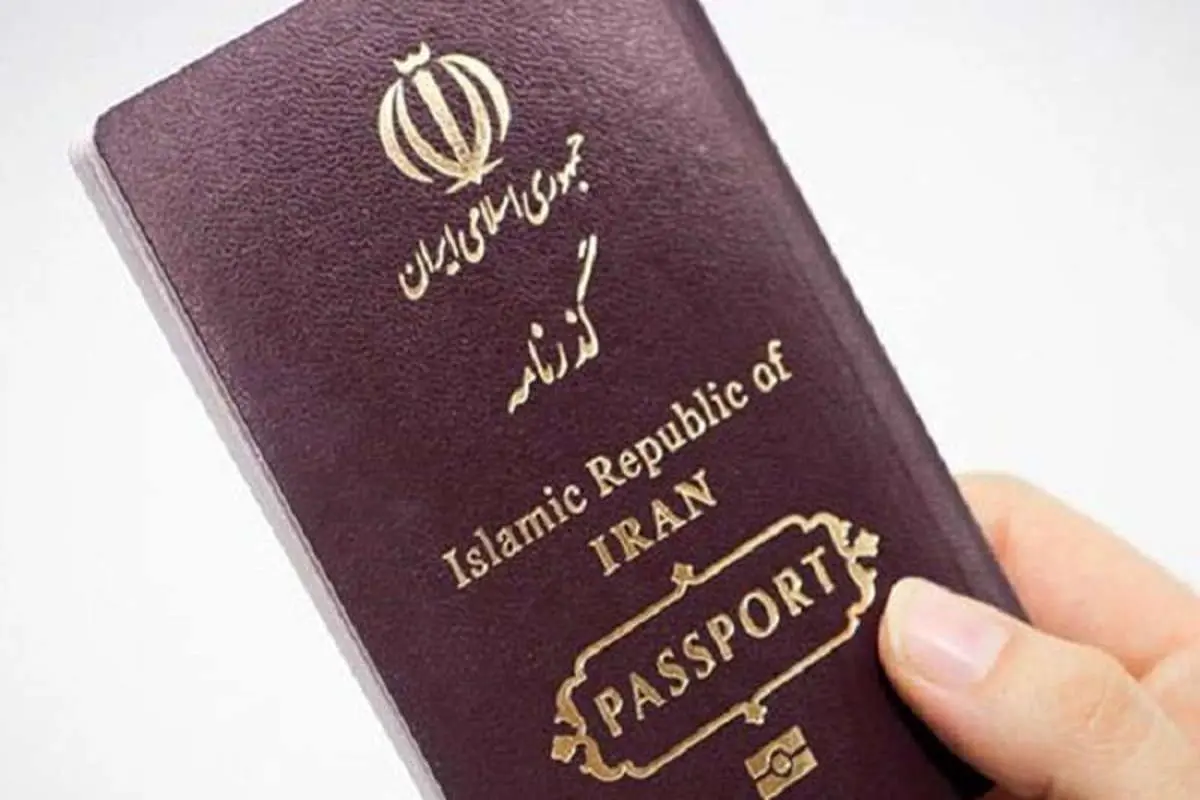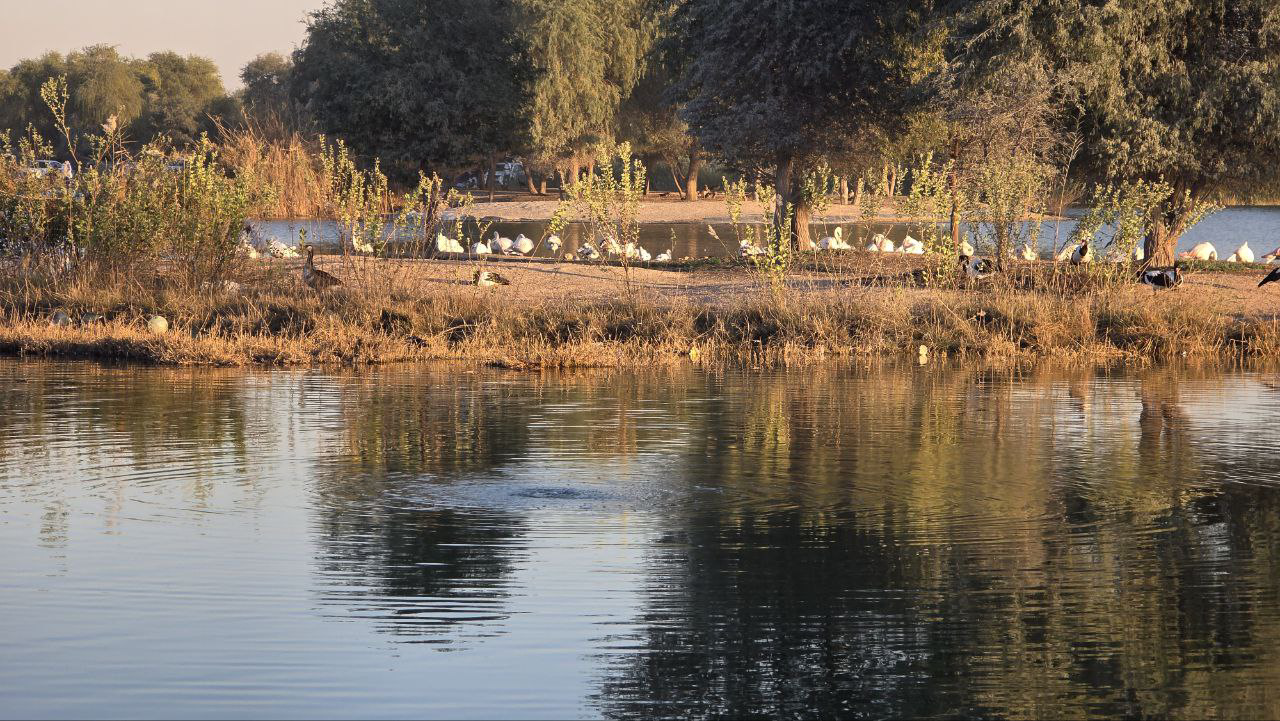Ferdowsi tomb |Remarkable Mausoleum in Khorasan Razavi, Iran
The tombs of many famous poets, such as Khayyam’s mausoleum, Hafez’s mausoleum, and Saadi’s mausoleum, belong to individuals who have played a significant role in preserving their homeland’s language, Persian. However, the remains of the person known as the reviver of the Persian language rest in a magnificent tomb in Greater Khorasan.
The construction of Ferdowsi’s mausoleum is considered one of the most beautiful tombs in Iran and a prominent attraction in Razavi Khorasan province. Over time, it has undergone various changes, with renowned architects presenting different designs for the mausoleum of this great poet. Join Gulf City Pedia to learn more about this structure and its owner.
Everything you need to know about Ferdowsi’s Mausoleum:
Where is Ferdowsi’s Mausoleum?
About Ferdowsi’s Mausoleum
Visiting conditions for Ferdowsi’s Mausoleum
Ferdowsi’s biography
History of Ferdowsi’s Mausoleum
Architecture of Ferdowsi’s Mausoleum
Different sections of Ferdowsi’s Mausoleum
Facilities of Ferdowsi’s Mausoleum
Attractions around Ferdowsi’s Mausoleum
Where is Ferdowsi’s Mausoleum?
Address: Razavi Khorasan Province, Mashhad County, Tous District, Shahnameh Boulevard, Baharstan Boulevard
Ferdowsi’s Mausoleum, known as the “Cultural Complex of Ferdowsi Garden Mausoleum,” is located in the city of Tous. The distance from Mashhad to Ferdowsi’s Mausoleum is approximately 30 kilometers. This mausoleum is situated between the two villages of Tous-e Sofla and Eslamiyeh, near the historical city of Tabaran and the historical shrine of Haruniyeh. The historical village of Paj, Ferdowsi’s birthplace, is 20 kilometers east of the mausoleum.

Access Routes:
There are various ways to reach Ferdowsi’s Mausoleum, including:
By Metro:
Take the Mashhad metro to the Exhibition Station.
Transfer to city trains and disembark.
Continue the journey with Bus Line 202.
The bus ride takes approximately 40 to 45 minutes and will take you to Ferdowsi’s Mausoleum.
By Bus:
Bus Line 202 departs from Ferdowsi Terminal in Mashhad towards Tous.
One of the stops is Ferdowsi’s Mausoleum.
By Private Car:
Accessing Ferdowsi’s Mausoleum by private car is straightforward.
From Qaem Square in the northwest of Mashhad, enter the Prophet Mohammad Expressway and then the Mashhad-Quchan Road.
After Talghani Hospital in Mashhad, turn into Shahnameh Boulevard on the right.
Follow Shahnameh Boulevard until near its end.
Complete the journey through Baharstan Boulevard to reach the nearest point to the mausoleum, namely the parking area.
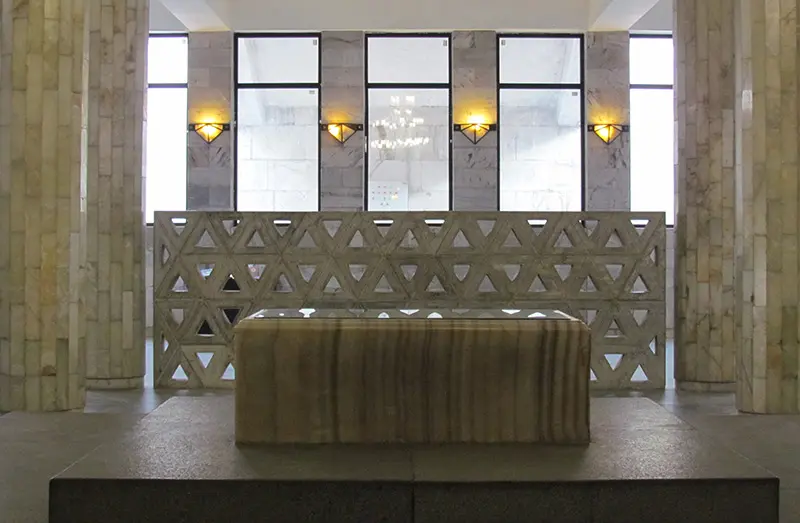
About Ferdowsi’s Mausoleum:
Ferdowsi’s Mausoleum, once known simply as the resting place of Hakim Abul-Qasim Ferdowsi, has evolved into more than just an ordinary tomb. This vast complex comprises different sections, elaborated below. The outer and inner views of the mausoleum showcase Ferdowsi’s verses, intricately depicted through tilework and stone engravings. After overcoming numerous challenges, Ferdowsi’s Mausoleum was officially registered as a national and prominent cultural heritage site on the 18th of Azar, 1354 SH (Solar Hijri) with registration number 1176.
Visiting Conditions for Ferdowsi’s Mausoleum:
First half of the year: 9 AM to 7 PM
Second half of the year: 8 AM to 5 PM
Holidays: The mausoleum is open on certain religious holidays, including the martyrdom of Imam Ali (AS), the martyrdom of Imam Jafar Sadiq (AS), Tasua and Ashura, the demise of Prophet Muhammad (PBUH), and the demise of Imam Khomeini (RA).
Ticket Price for Ferdowsi’s Mausoleum:
The ticket price for visiting Ferdowsi’s Mausoleum (as of the year 1402 SH) is five thousand Iranian Tomans for domestic tourists.
Biography of Ferdowsi:
Abu’l-Qasim Ferdowsi Tusi, the Iranian epic poet, opened his eyes to the world in the year 329 Hijri. He was born into a peasant family. Peasants were considered a lower aristocratic class during the Sasanian era, holding a secondary position in terms of prestige and wealth in the country. Ferdowsi is recognized as the greatest Persian poet, enjoying worldwide fame. Various sources have bestowed upon him titles such as “Hakim-e Sokhan” (Wise in Speech) and “Hakim-e Tous” (Wise of Tous).
A portion of Ferdowsi’s biography, from birth to death, remains shrouded in ambiguity. In fact, accurate information about Ferdowsi’s life before composing the Shahnameh is not available. According to some narratives, his first son was born in the year 359 Hijri. Information about Ferdowsi’s wife is also uncertain, with some researchers, including Mohammad-Taqi Bahar, considering the woman mentioned at the beginning of the story of “Bizhan and Manizheh” as Ferdowsi’s wife. Some narratives suggest that when Ferdowsi was 67 years old, he lost his 37-year-old son, causing him great sorrow, as reflected in some of his poems.

According to available documents in Shahnameh Abu-Mansouri, Ferdowsi began composing the Shahnameh at the age of thirty. However, considering his talent, it can be inferred that Ferdowsi had been engaged in this work since his youth. Some of the verses in Shahnameh belong to “Abu Mansouri Mohammad ibn Ahmad Tusi,” known as “Daqiqi,” which Ferdowsi himself acknowledged, and the rest, which he personally composed, is considered the core of Shahnameh.
Ferdowsi wrote stories during the “Era of Mansur ibn Nuh,” the Samanid ruler. Around the year 370 Hijri, during the second reign of Nuh, Mansur’s son, after Daqiqi’s death, Ferdowsi started putting the Abu-Mansouri’s Shahnameh into poetic form. It is highly probable that Daqiqi initiated the organization of Shahnameh by the order of the Samanid king. For this reason, Ferdowsi intended to travel to Bukhara (the capital of the Samanids) to receive the king’s order, obtain financial support, and use the Shahnameh of “Abu Mansouri Mohammad ibn Abd al-Razzaq.” There are two conflicting accounts of this journey, one stating that Ferdowsi’s journey was fruitless, and the other asserting that Ferdowsi never went on such a journey. Nevertheless, a friend from his hometown provided him with a manuscript of Shahnameh Abu-Mansouri. Amirak Mansur, the son of Abu Mansouri Mohammad ibn Abd al-Razzaq, financially supported Ferdowsi, but this support did not last long, as Amirak Mansur was later killed.
Ultimately, Shahnameh was completed in the year 384 Hijri. The first revision of this work took place 16 years after this date, with additional sections being added to the book.
After the death of Hakim Ferdowsi, for four centuries, there was no mention of the year of his death in historical sources. The preface of “Shahnameh Bayasanghri” is considered the first source to mention the time of Ferdowsi’s death, stating the year 416 Hijri, but there are contradictory beliefs about this date.

History of Ferdowsi’s Tomb:
Ferdowsi adhered to the Shia faith, and therefore, after his death, permission to bury him in the cemetery was denied. Consequently, his admirers buried him in a private garden in the city of Tabaran, Tous. A century after Ferdowsi’s death, his tomb was still intact and undamaged during the Ghaznavid invasion. In 641 Hijri, Amir Moghul decided to demolish Ferdowsi’s tomb for the construction of a castle in Tus.
During the rule of Ghaazan Khan, a person named Amir Eysan Qatlagh built a structure near Ferdowsi’s tomb, and a Khanqah (Sufi monastery) was also established beside it. However, Amir Eysan died before completing the construction.
Until the second half of the eighth century Hijri, Ferdowsi’s tomb was located next to the graves of Mohammad Ghazali and Ma’ashuq Tousi in the eastern part of Tous. Eventually, Abdullah Khan Uzbek, due to his hostility towards Shi’as, ordered the complete destruction of Ferdowsi’s tomb. Later, Amir Keykavus, a Russian researcher and consul, did not see any traces of Ferdowsi’s tomb during his visit to Tous, but according to the report of the Englishman Kerzen, remnants of Ferdowsi’s tomb were visible until around 1254 Hijri.
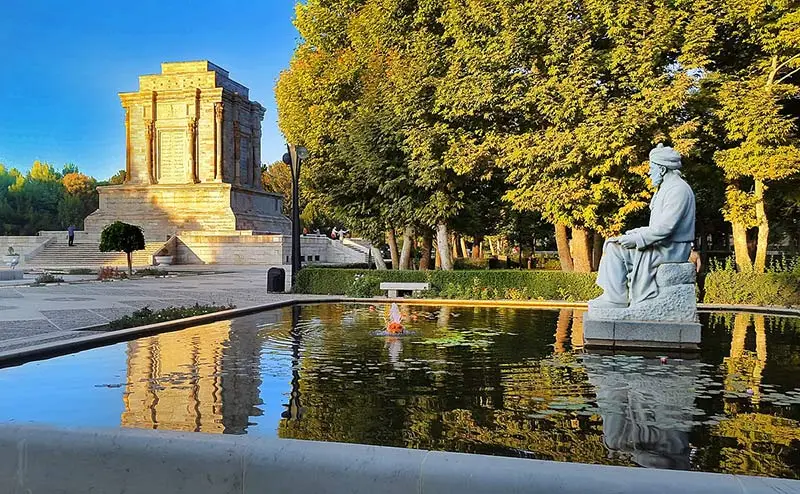
Afterward, a wheat field covered the tomb site. Abdolwahhab Asef al-Dowleh, the governor of Khorasan, went in search of Ferdowsi’s tomb and, with the guidance of some Frenchmen who had seen it in Tous, successfully located the precise location. A decision was made to construct a magnificent building suitable for Hakim Ferdowsi, and until the start of the construction, two temporary rooms were built near Ferdowsi’s tomb.
During the Pahlavi era, Mohammad-Taqi Bahar, at the instigation of Reza Shah’s patriotic sentiments, asked him to restore Ferdowsi’s tomb and build a magnificent structure in the area with national contributions. Upon the suggestion of “Mr. Keykhosrow Shahrokh,” the Zoroastrian representative in the parliament, the National Heritage Society published leaflets to inform people about financial assistance or a lottery for the construction of a worthy tomb for Hakim Abu’l-Qasem Ferdowsi. People were also urged to contribute to this event. Timurtash, an Iranian statesman in the Qajar and Pahlavi era, also proposed the reconstruction of Ferdowsi’s tomb in the parliament. Keykhosrow Shahrokh was assigned to find the exact burial place of Ferdowsi, which was then located in a garden owned by “Haj Mirza Mohammad Ali Qaem-Moqam al-Talavieh.” The owner offered this garden to Reza Shah, and Reza Shah, in turn, assigned the garden to the Society for the construction of a mausoleum.
The design of Ferdowsi’s tomb began. “Ernest Emil Herzfeld,” a German archaeologist, and “Karim Taherzadeh Behzad,” a well-known Iranian engineer and architect, rejected the proposal for the tomb’s design, and eventually, the design competition was initiated. Interestingly, Herzfeld and Taherzadeh Behzad participated in this competition, alongside individuals such as “Andre Godard” and “Nikolai Markov.” Finally, Taherzadeh Behzad’s design, which resembled the style of Achaemenid columns, was approved in 1307 Hijri.
Taherzadeh Behzad’s plan was halted in the middle, and they asked the Frenchman Godard to present a design for Ferdowsi’s mausoleum. Godard sent his design from France to Iran, but Timurtash insisted on changing his design and added a pyramidal roof to the building. The Society opposed Timurtash’s decision, believing that the pyramidal roof resembled Egyptian architecture. With these objections, Taherzadeh Behzad was once again invited to present a new design, considering Godard’s proposal. Taherzadeh Behzad deemed a stepped ceiling as a suitable replacement for the pyramidal roof.

After lengthy disputes, a new plan for Ferdowsi’s mausoleum was approved in 1312 Hijri, and it was completed under the supervision of “Hossein Lorzadeh” in 1313 Hijri. This building later subsided and underwent reconstruction and repair, entrusted to “Houshang Sihoun,” which was completed in 1347 Hijri.
Architecture of Ferdowsi’s Mausoleum:
Today, the total area of Ferdowsi’s Mausoleum complex is equivalent to 6 hectares, encompassing the mausoleum garden, a pool, Ferdowsi’s memorial, administrative building, library, museum, the mausoleum of the great poet Mehdi Akhavan Sales, and the mausoleum of the Iranian singing master Mohammad Reza Shajarian. The southern side of the complex features a statue depicting Hakim Abu al-Qasem Ferdowsi, created by “Abolhassan Sadiqi.” Thirty fountains, arranged in three sets of ten, adorned with lotus petal decorations, symbolize the 30 years of Ferdowsi’s endeavor in writing the Shahnameh, placed in the main pool of the mausoleum.
Architecture Inside Ferdowsi’s Mausoleum:
To enter the inner section of Ferdowsi’s Mausoleum, one must enter from the western front. The northern and southern stairs lead to the basement and the burial chamber. On the walls of the stairs, six prominent stone reliefs can be seen, which were on both sides of the burial chamber before the reconstruction. These reliefs depict stories such as Rostam’s battles, the war between Iranians and Turanians, and the battle between Rostam and Sohrab.
Grave Stone:
Inside Ferdowsi’s Mausoleum, in the central section, a marble grave stone measuring one meter by 1.5 meters with a height of half a meter is visible, marking the burial place of the great Iranian poet. The gravestone is inscribed with Nastaliq script:
“In the name of the Lord of Life and Wisdom. This auspicious place is the mausoleum of the master of Persian language narrators and the composer of Iranian national epics, Hakim Abu al-Qasem Ferdowsi Tus. His words revive the land of Iran, and his resting place is eternal in the hearts of the people of this land.”
Different Sections of Ferdowsi’s Mausoleum:
Main Building:
The construction of Ferdowsi’s Mausoleum has an area of 1043 square meters, featuring staircases from all sides. The building is cubic in shape and stands at a height of 18 meters. In the western side of the structure, there was a door before the reconstruction, serving as the entrance to Ferdowsi’s Mausoleum. In the eastern side, there was also a gate that was closed after the reconstruction and relocation of the burial site inside Ferdowsi’s Mausoleum.
On all four sides of the cubic-shaped mausoleum, marble slabs measuring 1.5 by 4 meters display verses from Shahnameh, including 12 lines each.
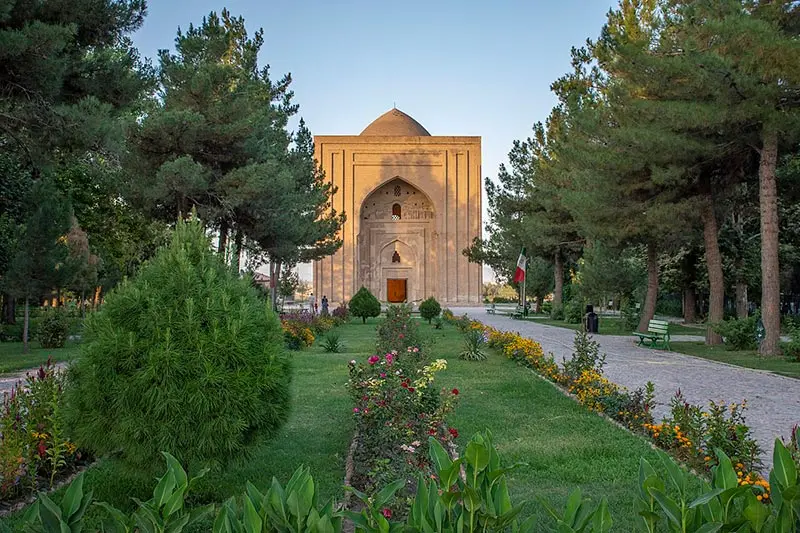
Ferdowsi Museum:
In 1384 Hijri, based on the decision of Dr. Behrouz Ahmadi, the resting place and teahouse of the mausoleum were transformed into Ferdowsi Museum. This museum, considered one of the attractions of Tous, houses objects with various titles, including artifacts from the prehistoric era discovered in the Tous plain, Islamic period ceramics, Islamic period coins, narrow-necked containers, perfume bottles, and pestles.
Ferdowsi Library:
In the Ferdowsi Mausoleum complex, a two-story building is noticeable, constructed in 1347 Hijri and known as Ferdowsi Library. The library accommodates more than 9,000 volumes of books. The first floor of the library is dedicated to the book repository, and the second floor serves as the reading hall.
Mausoleum of Mehdi Akhavan Sales:
Mehdi Akhavan Sales, the renowned Iranian poet, rests in the precincts of this mausoleum. Akhavan Sales passed away in 1369 Hijri, and his final resting place is located near the tomb of the great poet Ferdowsi. The artist’s grave is in the western section of the mausoleum complex, and a statue of him is visible atop the gravestone.
Mausoleum of Mohammad Reza Shajarian:
Master Mohammad Reza Shajarian, a distinguished figure in Iranian music, was born on the 1st of Mehr, 1319 Hijri, and after years of battling illness, he bid farewell to the mortal world on the 17th of Mehr, 1399 Hijri. In the early morning of the 19th of Mehr, 1399 Hijri, Shajarian, the nightingale of Iran, was laid to rest near the mausoleum of Mehdi Akhavan Sales, completing the treasures of Tous’ soil.
Facilities of Ferdowsi’s Mausoleum:
Fortunately, in recent years and due to the significant influx of domestic and foreign tourists to Ferdowsi’s Mausoleum, measures have been taken to enhance the comfort of visitors. Currently (as of 1402), Ferdowsi’s Mausoleum complex, in addition to all the mentioned sections, features a café and restaurant. Several souvenir shops have also been established in the vicinity of the mausoleum. For the convenience of visitors, two sanitary facilities are available in the northern and southern parts of the mausoleum.
Attractions Around Ferdowsi’s Mausoleum:
Baqe Haroonyeh:
Address: Khorasan Razavi Province, Mashhad County, Tous District, near Shahnameh Boulevard.
Admission Cost (in 1402): Four thousand Tomans.
Distance from Ferdowsi’s Mausoleum: Approximately 1.5 kilometers (30 minutes on foot, 5 minutes by car).
Baqe Haroonyeh is located near Ferdowsi’s Mausoleum, featuring a cubic brick structure with a long history. There are various opinions about its purpose, with some considering it a school or a Sufi monastery and the burial place of “Imam Mohammad Ghazali.” Others identify it as a mosque built on the remains of a Sassanian fire temple after the Muslim conquest of Iran. Despite being commonly known as “Harun’s Prison,” there is no resemblance between this site and an actual prison. Researchers believe the building dates back to the 6th century Hijri. It was added to the National Heritage List as the mausoleum attributed to Imam Ghazali (No. 8944) in 1382 Hijri.
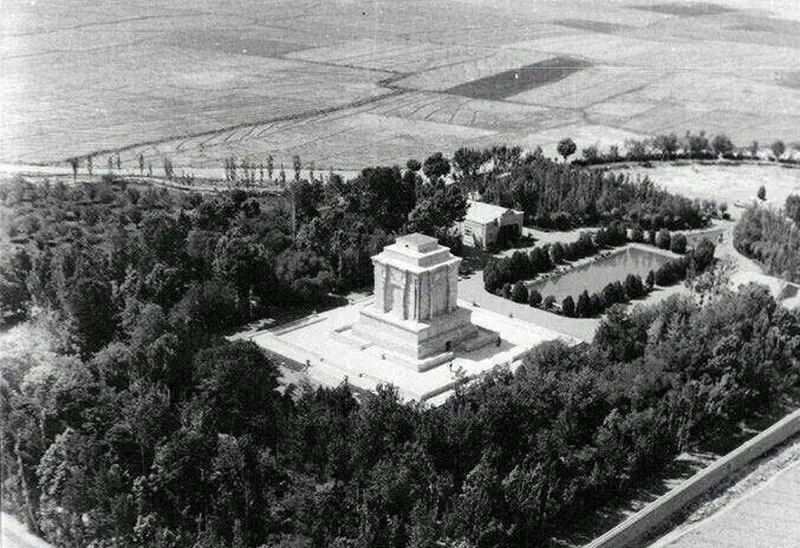
Koohsangi Park:
Address: Razavi Khorasan Province, Mashhad, Koohsangi Park.
Admission Cost: Free.
Distance from Ferdowsi’s Mausoleum: Approximately 2 kilometers (40 minutes on foot, 5 minutes by car).
Koohsangi Park is one of Mashhad’s most popular recreational areas, offering greenery, walking paths, and a serene atmosphere. It’s a great place for relaxation and spending time outdoors.
Kalat Naderi:
Address: Khorasan Razavi Province, Mashhad, Kalat Naderi.
Admission Cost: Free.
Distance from Ferdowsi’s Mausoleum: Approximately 3 kilometers (1 hour on foot, 10 minutes by car).
Kalat Naderi is a historical fortress with a rich history dating back to different periods, including the Seljuk, Samanid, and Timurid eras. It stands as a testament to the region’s historical significance and architectural prowess.

FAQs:
In which city is Ferdowsi’s Mausoleum located?
Ferdowsi’s Mausoleum is located in Mashhad, Khorasan Razavi Province, Tous District, at the end of Shahnameh Boulevard, Baharstan Boulevard.
Who is buried in Ferdowsi’s Mausoleum?
Hakim Abu al-Qasem Ferdowsi, Mehdi Akhavan Sales, and Mohammad Reza Shajarian are buried in Ferdowsi’s Mausoleum.
What are the visiting hours of Ferdowsi’s Mausoleum?
Visiting hours for the mausoleum are from 9 AM to 7 PM in the first half of the year and from 8 AM to 5 PM in the second half of the year.
How much is the ticket price for Ferdowsi’s Mausoleum?
The ticket price (as of 1402) is five thousand Tomans for domestic tourists.

